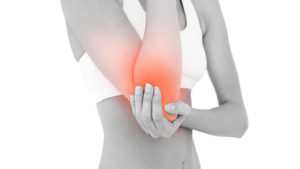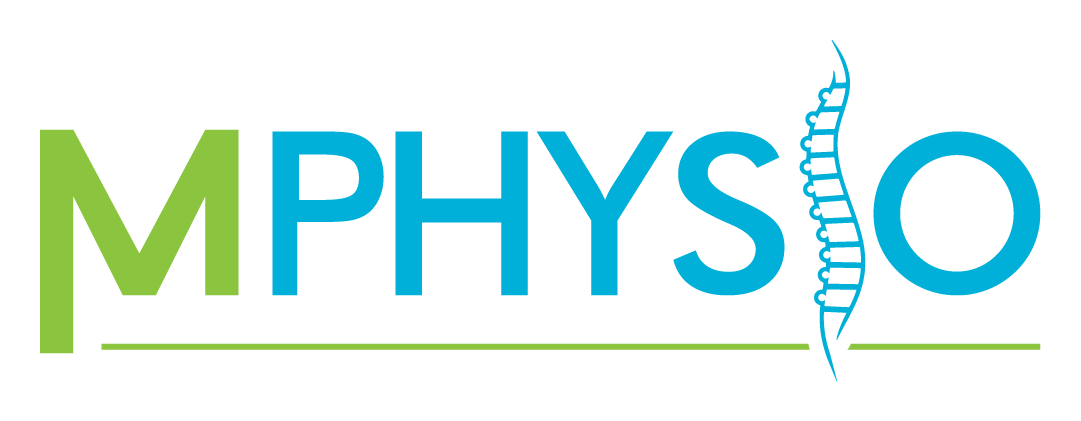Physiotherapy
Common Conditions of the Elbow

The elbow is a complex joint, which is commonly injured in throwing sports due to high stresses and repetitive motions of the joint.
Anatomy of the Elbow
- Three bones: the humerus (upper arm), the radius and the ulna (forearm) – There is two separate articulations which allows for the hinge motion of bending and straightening your arm, as well as the pivotal or rotating movement of turning your palm up to face the sky or down to face the floor.
- Ligaments: radial collateral ligament connects with the annular ligament (outside of elbow), as well as the ulnar collateral ligament (inside of elbow)
- Tendons/Muscles: biceps tendon (anterior attachment of the biceps muscle), triceps tendon (posterior attachment of the triceps muscle), wrist extensor and flexor tendons attach medially and laterally respectively
- Vasculature: cubital anastomosis composed of joining branches from brachial arteries
- Neural: parts of the elbow are innervated by different nerves including the median, musculocutaneous, radial (anterior) and ulnar nerve (posterior)
As can be seen by the extensive list above, there are many structures contained in quite a small space of the body, meaning that when the elbow is injured multiple structures can be at play. All in all, the elbow is a very strong joint and it normally takes quite a large force for an acute injury to occur, or a very high load for repetitive injuries to occur. This is why the joint is most commonly injured in athletes or in an accident.
Common Conditions
Lateral Epicondylitis or Tennis Elbow
Overuse of the muscles of the forearm and hand leads to pain and discomfort on the outside of the elbow, and may spread down the forearm and into the wrist. This condition is commonly known as tennis elbow as it is most prevalent in tennis players, but will also cause discomfort during actions such as opening a jar or lifting something. Initial treatment consists of rest, ice and activity modification. Gradual re-loading and conditioning of the muscles will help to prevent recurrence.
Medial Epicondylitis or Golfer’s Elbow
This is similar to condition above, except it affects the medial epicondyle on the inside of the elbow. It is common in golfer’s, but can be caused in anyone who repeatedly flexes the wrist, as this causes stress on the muscles and tendons that attach to the medial epicondyle. Initial treatment consists of rest, ice and activity modification. Gradual re-loading and conditioning of the muscles will help to prevent recurrence. This may also be referred to as flexor tendonitis, referring to irritation of the tendons of the flexor and pronator muscles where they attach at the medial epicondyle, which can be provoked in overhand throwing athletes.
Ulnar neuropathy/Cubital Tunnel Syndrome
The ulnar nerve runs posteromedially, and sits in a groove towards the back and outside of the elbow. Because of its location and little protection to the nerve, direct pressure, stretching or repeated movement can result in irritation. Particularly in athletes, repeated movement can result in the ulnar nerve snapping in and out of its groove which results in irritation to the already sensitive neural structure.
Ulnar Collateral Ligament injury
The ulnar collateral ligament is the ligament complex on the inside of the arm, made up of three components with the front (anterior) component being the most important for elbow stability. The most common mechanism of injury is overuse, whereby gradual repeated stress results in minor microtrauma, eventually constituting a tear. The two most prevalent symptoms are pain and instability, meaning that once the initial injury has repaired, muscle strengthening is required to help compensate for the lack of stability. In some cases, more so for elite athletes, surgical repair may be necessary.
Other conditions
Acute injuries such as fractures or dislocations are uncommon, but can happen with great force and direct trauma to the area which may occur during contact sports or in a motor vehicle accident. Sudden resistance to flexion with heavy weights may result in bicep tendon rupture. Other irritation and pain can be caused by bony spurs or joint arthritis.
If you are or know someone who is suffering from an elbow injury, contact us today to book an appointment with one of our experienced physiotherapists for a careful assessment, diagnosis and treatment!
Imagine a life free of pain or injury!
Phone: 1800 992 999
Email: [email protected]
References:
https://www.ortho.wustl.edu/content/Patient-Care/3151/Services/Shoulder-Elbow/Overview/Elbow-Arthroscopy-Information/The-Anatomy-of-the-Elbow.aspx
https://orthoinfo.aaos.org/en/diseases–conditions/elbow-injuries-in-the-throwing-athlete/
https://handcare.assh.org/Anatomy/Details-Page/ArticleID/27955/Cubital-Tunnel-Syndrome
http://prosportortho.com/common-elbow-conditions/
